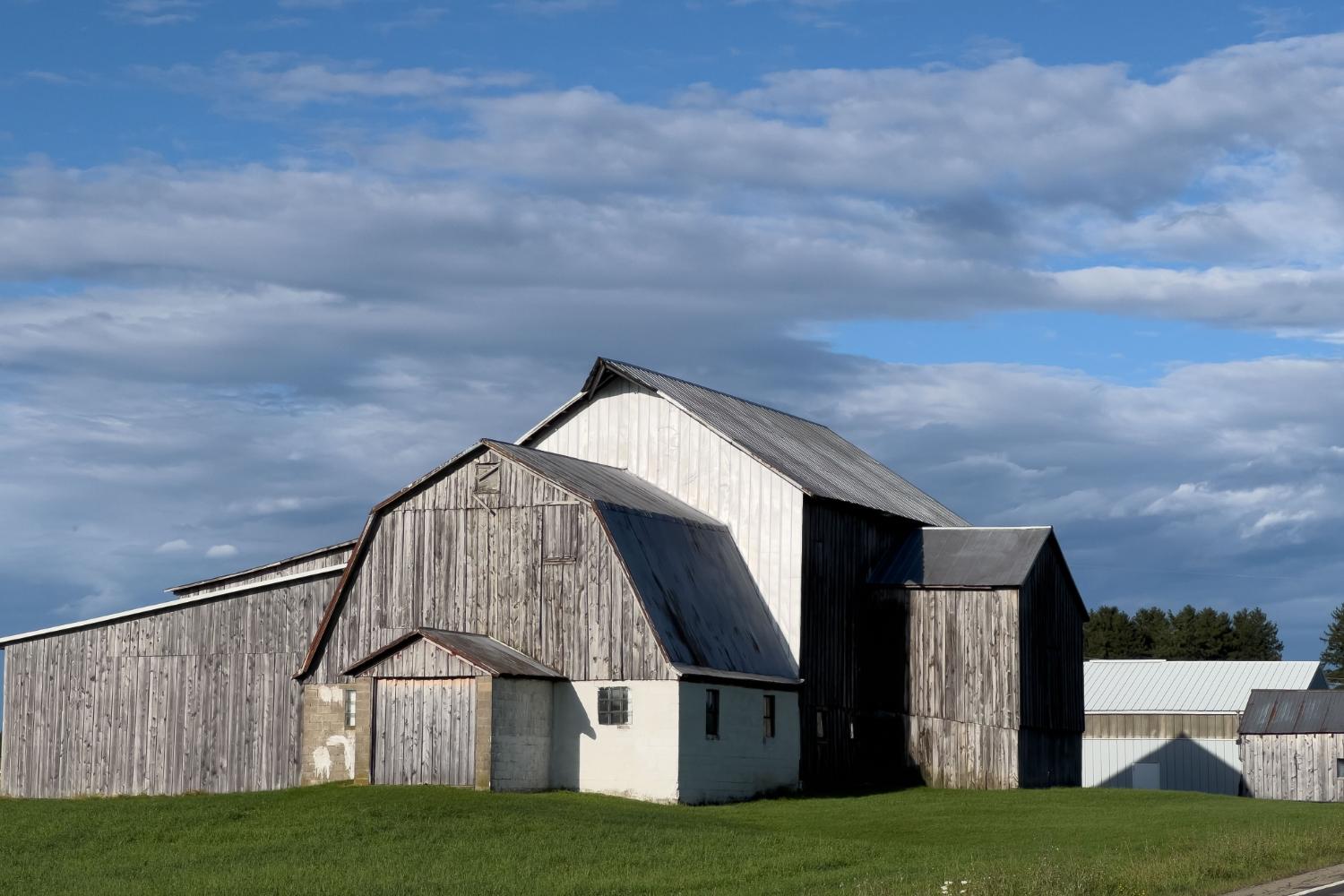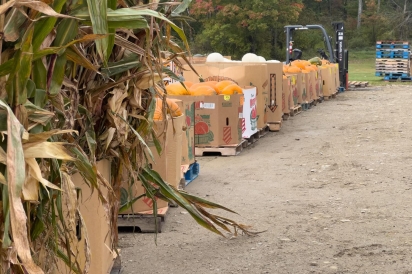Food Supply, Security and The Farm Bill
When Congress scrambled to avert a government shutdown at the end of September and again in November, it left some important business unfinished, including the reauthorization of a massive and far-reaching piece of legislation known as the farm bill.
Created in the 1930s to help struggling farmers through the Great Depression, the farm bill must be reauthorized every five years. It has evolved to cover a broad range of agricultural and nutrition programs with the ultimate goal of ensuring that the country has a safe and sustainable food supply. It includes programs such as the Supplemental Nutrition Assistance Program (SNAP), once known as food stamps, as well as crop insurance, funding for agricultural research, and measures to address conservation and climate change.
The current farm bill, called the Agriculture Improvement Act of 2018, expired on September 30. Under the Further Continuing Appropriations and Other Extensions Act, 2024, passed in mid-November, the 2018 provisions will remain in place through September 2024. After that, lawmakers either need to pass a new farm bill or a further extension of the existing one to ensure its programs continue without interruption.
Western New Yorkers are watching the process closely. The farm bill has important implications for the region, which is one of the state’s most productive agricultural areas and home to communities with high rates of poverty. Even for those not involved in farming, the legislation is worth paying attention to.
“Even though you might not be a farmer and you might not shop from local farms, the farm bill still impacts you day to day because we all eat,” says Linnea Haskin, director of the Jamestown Public Market.
“As we see the increased impacts of things like climate change, the wage gap getting larger, inflation—all of these impact our ability to access food and our farmers’ ability to grow that food,” she adds.
SUPPORTING NUTRITION
Close to 80% of the farm bill is dedicated to nutrition, and most of that is for SNAP. In Western New York, the program covers more than 225,000 people, according to state Office of Temporary and Disability Assistance data.
With SNAP, people can purchase fruits, vegetables, meat, dairy and other nutritious foods from retail stores and farmers markets. To receive these benefits, they must meet eligibility requirements, which could be tightened under the new farm bill. Other proposed changes include greater investment in employment training and expanding eligibility to college students, but there are also calls for reducing funding for the SNAP program overall.
“The last time it was reauthorized, we lived in a different world,” says Lauren Picone, government affairs manager at Feed-More WNY, which operates a food bank distribution center and hunger relief programs throughout Cattaraugus, Chautauqua, Erie and Niagara counties. “It was 2018, prior to the pandemic. We had no clue what was ahead of us … And now, we’re in a very different landscape.”
SNAP, which Picone describes as a first line of defense against hunger, expanded during the pandemic to help people affected by job cuts and school closures, but those boosts ended in March 2023. While benefits have returned to pre-pandemic levels, inflation continues to be high, leaving many to struggle with the cost of groceries.
Organizations like FeedMore WNY help to fill that gap with food provided under the farm bill through the Temporary Emergency Food Assistance Program (TEFAP), as well as by helping to enroll eligible individuals and families in SNAP.
“So many people in our community are food insecure, despite the fact that we’re a large agricultural community,” says Haskin.
Since 2012, shoppers at the Jamestown Public Market have been able to use SNAP benefits to purchase directly from local farmers. The market is one of more than 200 statewide accepting SNAP. In 2022, it saw nearly $20,000 in transactions using SNAP and Double-Up coupons, which are also funded through the farm bill but solely for purchasing fruits and vegetables.
SNAP purchases have tangible economic impacts, especially in rural communities. The USDA found that SNAP spending increased rural economic output by 1.25% and rural employment by 1.18% annually, compared to 0.53% and 0.50% in urban areas.
“Being able to accept the SNAP benefits through the farmers market has really made a huge difference for us as a farm in terms of success and growth,” says Chrissy Conklin of Conklin Family Ranch, which started selling at the Jamestown Public Market in 2021.
A small and relatively new farm in Chautauqua County, Conklin Family Ranch does not yet have a storefront for its Black Angus beef, pork, eggs and other products, and it can only accept SNAP through the market.
“It really opened up a whole customer base that we would not have had access to,” Conklin says.
ON THE FARM
Western New York is home to more than 6,300 farms, almost all of which are family owned, according to the most recent USDA Census of Agriculture. These farms produce just over $1.2 billion in fruits, vegetables, meat, dairy and other products each year, placing the region among the state’s top agricultural areas.
They face emerging and dynamic challenges, from climate change, conservation and invasive species to rising prices for land and feed grain and fluctuating prices for milk. The agricultural programs funded through the farm bill—especially those dedicated to research, crop insurance and revenue protection—are central to their survival.
“We don’t want direct subsidies,” says Jim Bittner, president and general manager of Bittner-Singer Orchards, a 108-year-old family farm in Appleton, Niagara County, that grows cherries, peaches, apples and other fruits. “We want help with research.”
The Specialty Crop Block Grant Program delivers funding for some of that research. Under the farm bill, fruits and vegetables are considered specialty crops, and this block grant program allocates funds to states for marketing, education and research. In New York, farmers determine the research priorities, which have included crop resilience and developing new varieties, as well as addressing new and emerging pests, which Bittner calls “things that we have to deal with overnight.
“That research money is a big deal for the fruit and vegetable industry in New York state,” he adds.
One of the most recent visible products of that research is the new SnapDragon apple, which came onto the mainstream market about two years ago.
For dairy farmers, research funding is critical for advancing technology and supporting new conservation measures. A prime example is the Environmental Quality Incentives Program, or EQIP, which helps farmers adopt conservation practices or activities in their operations.
“In agriculture, we’re constantly changing,” says Pat McCormick, president and owner of Robbiehill Family Dairy in Java Center, Wyoming County. “The conservation programs aren’t just good for the environment. They help us produce more, to be able to do more with the same amount of land by taking care of the land.”
The farm bill’s crop insurance and revenue protection programs are also essential for Western New York’s farmers. The programs, however, come with high deductibles and only cover a relatively small portion of farmers’ losses.
“Growing fruits and vegetables is very risky,” says Bittner, whose crops can be destroyed or damaged by hail from increasingly strong thunderstorms or by unexpected frosts like the one in May 2023. “When things go sideways, there’s a bit of a safety net to hopefully keep farmers in business so they can live to farm another day.”
For dairy farmers, the farm bill has several programs to help them weather the volatility of milk prices and rising costs of feed grain that have marked the last few years.
“It’s very important to keep the family farms going with these risk management tools,” McCormick says.
With 700 cows, McCormick’s farm supports three families: his own, his brother’s and his parents. Since milk prices are down this year, dairy revenue protection insurance will likely come into play.
“We can’t just shut the cows off,” McCormick says. “We can have fewer cows, but it still affects how we do business, how we’re able to keep our employees going. We need a certain amount of milk to be able to keep the business running.”










